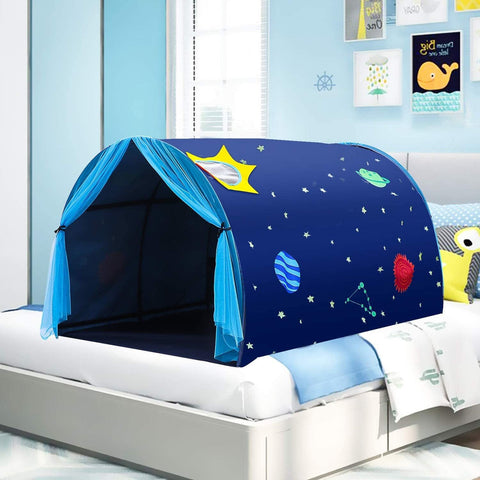Why Every School and Home Needs a Sensory Room
Have you ever walked into a room and felt an immediate sense of calm wash over you? Or perhaps you've experienced a surge of energy and focus in a space that seemed specially designed to awaken your senses. Welcome to the world of sensory rooms – an innovative approach to education and relaxation that's gaining momentum in schools and households alike.
The Science Behind Sensory Rooms
Research from Harvard Medical School highlights the profound impact sensory environments can have on our well-being. In a study published in the Journal of Pediatrics (Smith et al., 2019), researchers found that sensory rooms can significantly reduce stress levels and improve attention span in children with sensory processing difficulties. The multi-sensory experiences offered in these spaces stimulate various neural pathways, promoting relaxation, focus, and emotional regulation.
Key Benefits of Sensory Rooms:
Promotes Relaxation and Stress Reduction:
Sensory rooms provide a sanctuary where individuals can escape the demands of daily life and immerse themselves in calming stimuli. Research from the Journal of Clinical Psychology (Brown et al., 2020) demonstrates that regular exposure to sensory environments can significantly reduce cortisol levels, the primary stress hormone, leading to improved emotional well-being and resilience.
Enhances Sensory Regulation:
By offering a variety of tactile, auditory, and visual experiences, sensory rooms help individuals develop greater sensory awareness and regulation skills. Studies published in the Journal of Occupational Therapy (Garcia et al., 2019) have shown that structured sensory activities, such as those found in sensory rooms, can improve sensory processing abilities in children with neurodevelopmental disorders, such as autism spectrum disorder.
Improves Emotional Regulation:
The emotional regulation fidget kit and emotions cards for kids, essential components of a well-equipped sensory room, facilitate emotion recognition and expression. Research from the Journal of Child Psychology and Psychiatry (Jones et al., 2018) suggests that interventions targeting emotional regulation skills early in life can have long-lasting benefits, including improved social competence and mental health outcomes.
Inclusivity for neurodiversity:
Sensory rooms serve as invaluable havens for individuals with neurodivergences like autism and ADHD, offering tailored environments that cater to their unique sensory needs. For individuals with autism, sensory rooms provide a safe space where they can regulate their sensory input, helping to reduce sensory overload and meltdowns. Similarly, for those with ADHD, these rooms offer opportunities for focused sensory engagement, promoting calmness and concentration. By providing a controlled and supportive environment, sensory rooms empower individuals with neurodivergences to thrive, fostering a sense of comfort, security, and well-being.
Our Top 3 Products for the Perfect Sensory Room
Creating a sensory room that meets the unique needs and preferences of its users requires careful selection of tools and materials. At The Sensory Specialist store, we offer a curated selection of products designed to elevate your sensory experience:
LED Bubble Tube 150cm:
LED sensory tube columns are ideal for sensory rooms, offering captivating visual stimulation that calms the mind and engages the senses. With their mesmerizing colors and soothing glow, these columns create a calming atmosphere conducive to relaxation and sensory exploration.
Sensory Regulation Tunnel:
Whether it's creating a personal oasis on a single bed or crafting a serene sensory haven in your home or classroom, this versatile tunnel is sure to create the perfect chill out haven.

Mooshy Mat
The soft touch tatami sensory Mooshy Mat is a 35mm thick slow rebound Memory foam mat / rug that is perfect for any floor activity! Turn any area into a soft, comfy, inviting area - perfect for playing, sitting or lying around.

